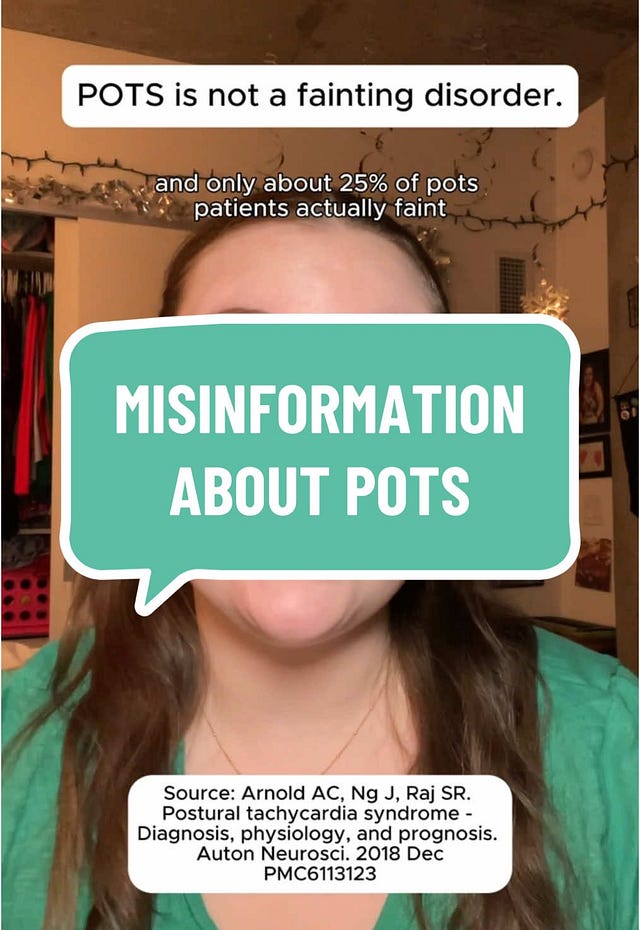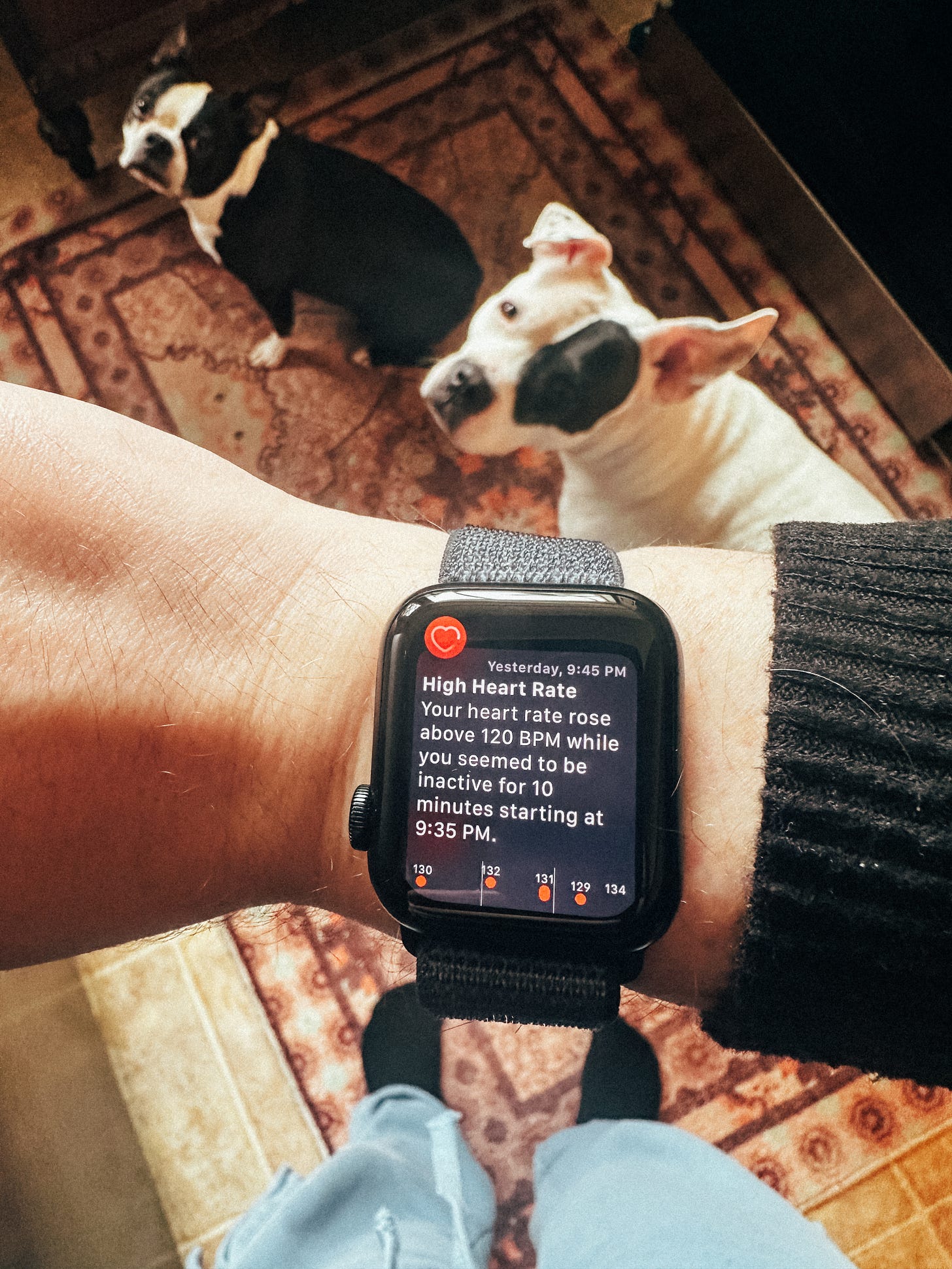I Got the Irritable Heart Syndrome, Doc
peeking into the history of POTS
this post is wayyyyy too long for your email probably, on account of all the pictures of newspaper clippings in the last half for paid subscribers. Upgrade to see what I dug out of the archives this week:
Close readers of my letters will know that I have been fucking struggling.
In January I went to the ER for a “sudden and severe headache during climax” (yes that is in my medical records forever now), got my brain scanned for the first time, and went home with a prescription to Tylenol and confirmation that my brain was not in fact, bleeding, not even a little bit, and no aneurysms to write home about, either. Nice!
I proceeded to have a month full of headaches, some with the intensity of pain tied directly to the intensity of orgasm, which made me begin to wonder: maybe God really is punishing me for being a gay slut???
Upon letting a very nice acupuncturist named Kathleen aggressively scrape my neck and shoulders with a ramen spoon, I realized that this, along with lying on top of a heating pad set to a temperature just below burning my skin off, seemed to be my only respite from a daily stabbing in my left eye.
Anytime I get a pain/fatigue flare, I start Googling “community acupuncture near me.” Acupuncture is thought to ease pain by triggering the parasympathetic nervous system to rest and digest you the fuck out, and it really seems to help me. We humans are nothing if not silly little problem-solvers, tinkering with our autonomic nervous systems by way of tiny, strategically-placed needles.
And what was that word? For when your autonomics get wonky? Dysautonomia?
My sex headaches seemed to be much worse when I was in an upright position, but not as bad laid flat, just like the pain at the back of my neck. After a bit of rabbit-holing, I found myself deep in the POTS subreddit reading about coathanger pain — a burning in your neck and shoulders that is relieved upon lying down.
I’ve had this for as long as I can remember. I thought my head was just too heavy for my neck, or something, but no, it’s a bloodflow thing, and a tell-tale sign of dysautonomia. The other one, sitting like a human pretzel, I also must do constantly, but I’ve never fainted, so I didn’t think I could have POTS.
That’s all I’d ever absorbed about it from the media — that disease where you faint a lot — but I have since learned this is a major misconception. “Syncope is not a predominant feature of POTS,” according to autonomic neuroscientists — only like a quarter of people with POTS faint. Audiences do love a tragic tale of young, healthy people mysteriously (and literally) falling ill, though!

 Tiktok failed to load.
Tiktok failed to load.Enable 3rd party cookies or use another browser
POTS is a type of orthostatic (or, upright) intolerance that causes a very fast heart rate upon standing without a rise in blood pressure. There are thought to be several different mechanisms that can produce the syndrome, but essentially, the autonomic nervous system has trouble coordinating all the processes required to push blood up through the body and into the brain against the force of gravity.1
This can cause all kinds of shitty symptoms — headache and chronic pain being quite common, as well as fatigue, dizziness, nausea, brain fog, heart palpitations, and shortness of breath.
In a clinic, POTS is diagnosed by strapping a person to a medieval torture table and flipping them upright until they pass out, but it can also be diagnosed using the NASA lean test, which is a much less intense procedure that was developed to test a treatment for the gravity intolerance that astronauts experience when they come back down to Earth. (That treatment — a fuckton of salty water to increase blood volume — is now used for POTS!)
Since I had recently given in to the smartwatch cult and could see how fast my heart was beating in real time, I decided to give myself a half-hearted lean test one night before bed, just for funsies.
Switching from lying to standing, my heart rate went up and stayed up for ten minutes. That’s interesting, I thought. But I was moving a little, I had no way to measure my blood pressure, the increase has to be 30 BPMs or more and I’m pretty bad at math…so I shrugged it off.
A couple weeks later I asked Gray to help me do it more carefully, so I could stay really, really still while they noted down my heart rate every 2 minutes. This turned out to be surprisingly hard — after two minutes of complete stillness, my brain was screaming sit down sit down sit down for the LOVE OF GOD PLEASE SIT DOWN! It got harder to breathe; my limbs went all tingly. My heart rate was sustained over 30 BPMs.
After ten minutes, I sat down with my feet up, and it dropped back to resting almost immediately. “We need a control,” I said, whipping off my watch to make Gray try it, too. But their heart rate only jumped up briefly by about 10 BPMs, and then went right back down, no problem.
When I asked my doctor to test me properly in her office, she confirmed that I was, indeed, orthostatically intolerant, and sent me home with an ab binder to squeeze the blood up my body like a human toothpaste tube, and a prescription for an alarming amount of salt.
A couple more unremarkable tests and basically normal labs to rule out other stuff later, I have found myself inducted into Club POTS, along with, actually, quite a lot more people now. Dysautonomia International estimates that cases of POTS have doubled since COVID hit in 2020, due to the fact that it’s often triggered by viral illness.
One study found that 66% of subjects with Long COVID had some kind of autonomic dysfunction. I had one confirmed case of COVID in early 2021, and I fully recovered from it, so I’ve never thought to call myself a long-hauler. But as Julia Doubleday writes:
“..it’s not always possible for you to separate out what is Long COVID versus what is aging, and what is from other risk factors like smoking, drinking, genetics, poor eating habits, or bad luck. It’s only possible to know that by looking at large populations of people, and each time we do that, we get the same result: COVID makes all of these health conditions worse, accelerates aging, damages organ systems, and causes the onset of new health conditions.”
And so it is from here that I sip my Saltcius,2 a tiny data point in a population wave, typing out my little tales on a keyboard. Since digging through archives is one of my healthier coping mechanisms, no one should be at all surprised that I’ve been spending my very limited energy lately clipping newspaper stories about POTS from 1995-2025.
A popular history of the syndrome apparently does not yet exist, so here’s what I found about how the US media has written about it over the last thirty years, plus, the surprising origins of POTS research.
Keep reading with a 7-day free trial
Subscribe to Sluggish to keep reading this post and get 7 days of free access to the full post archives.

